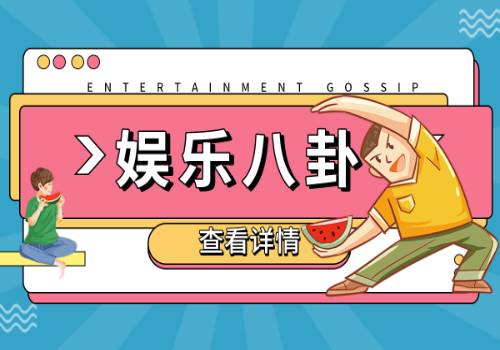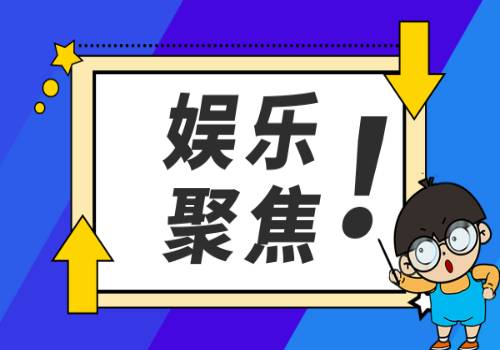原文标题:Character Development: A story about subtitles, cinema, and the Satos
原文链接:https://media.typography.or.jp/typographicst/1194
 【资料图】
【资料图】
日文原文发表于TYPOGRAPHICS T誌 Sep.2022 303 “映る文字 シネマ文字の歴史”特刊
日文原文链接:https://cinema-font.com/interview/typographics
由于本人翻译水平不足,译文可能有多处错误,故将原文贴在译文后,以免错误的译文对您产生误导。
在 2022 年 9 月出版的第 303 期 typographics ti 杂志上,发表了一个关于 "反映人物"的特别专题。 这篇文章的作者 Dan Vaughan 的愿望是将文章的英文原版在网上发表在typographics ti 上,以便在世界各地传播电影字体的历史。
2022 年 9 月に発行された typographics t 誌 303 号内では、「映る文字」の特集が掲載しました。このエッセイの作者 Dan Vaughan さんの希望として、シネマフォントの歴史が世界中に広がるため記事の元である英語版が typographics t オンラインで掲載されることでした。
前言:Duncan Brotherton
主编|typographics t
Foreword: Duncan Brotherton
Editor in chief | typographics t
我参与字体设计已经有两年了。尽管这两年都是在我的厄年(日本人认为在某些年龄段会出现3年的坏运气),但所有这些我在杂志上刊登精彩内容的机会,都让我觉得有一些当地的神在看着我。
I have been involved in typographics t for two years now. Despite them both being during my yakudoshi years (a 3-year period of bad luck that occurs at certain ages, believed by the Japanese), all of these opportunities I have been presented with to feature great content in the magazine has me feeling like some local god is watching over me.
2021年夏天,Ian Lynam(在第300期的全球字体接力文章中出现过)与我联系,希望介绍一位正在研究日本字体的朋友。伊恩的想法是,我--作为JTA(Japan Typography Association,日本字体设计协会)的董事会成员--应该能够提供帮助。我没有想到的是,一个外国人会联系我。我的意思是,为什么一个外国人会对一种非常特殊的、基本上不为人知的字体的历史感兴趣?我没想到会有其他像我这样的字体书呆子在那里。
In the summer of 2021, Ian Lynam (featured in issue 300’s Global Type Relay article) contacted me wanting to introduce a friend who was researching Japanese fonts. Ian’s line of thought was that I—being a board member of the JTA—would be able to help. What I was NOT expecting, was a foreigner to contact me. I mean, why would a foreigner be interested in the history of a very specific, largely unknown typeface? I didn’t expect there to be other type nerds out there like myself.
和我一样,Dan Vaughan是一位生活在日本的澳大利亚平面设计师。他在东京工作,当时想研究一种叫做Cinema Font的字体。他第一次是在某部电影的字幕中看到它,并想联系日本字体设计协会,看看他是否能了解更多。
Like myself, Dan Vaughan is an Australian graphic designer living in Japan. He is based in Tokyo and at the time was wanting to research about a typeface called Cinema Font. He had first seen it in the subtitles of a movie somewhere and wanted to contact the Japan Typography Association to see if he could find out more.
这个话题在我们的下一次董事会会议上被提出来,不久之后,一位日本字体协会的成员,大崎先生,建议我们联系Fontworks(协会的企业成员之一)。他们的部分字体系列包括New Cinema字体,该字体由佐藤英夫(原Cinema字体的创造者)创造。我们被告知他已经去世了,但他建议我们还是试着联系Fontworks。我立即与之联系,并很快被介绍给佐藤英夫的儿子佐藤武。Dan和我随后安排在Zoom上与佐藤武和他的妻子明子见面,我帮助Dan翻译了采访。
The topic was raised at our next board meeting, and shortly after a JTA member, Mr. Osaki, recommended that we contact Fontworks (one of the associations corporate members). Part of their font range includes the typeface New Cinema, which was created by Hideo Sato (the creator of the original Cinema Font). We were informed that he had already passed away, but he recommended we try to contact Fontworks anyway. I got in contact immediately, and was promptly introduced to Takeshi Sato, Hideo Sato’s son. Dan and I then arranged to meet Takeshi and his wife Akiko Sato on Zoom, and I helped interpret the interview for Dan.
采访提供了大量有趣的信息,之后我问Dan,他打算在哪里发表他的研究。他说他还没有决定。在提出建议后,我们同意将日文版的排版和英文原版的研究在这里在线出版。
After the interview, which provided plenty of interesting information, I asked Dan where he was planning to publish his research. He said he hadn’t decided. After an offer, it was agreed that we would publish the Japanese edition in typographics t and the original English research here, online.
我们在这里看到的是一位在东京的澳大利亚设计师主动研究他感兴趣的独特的日本字体,以及一位在京都的澳大利亚设计师帮助解释采访内容,翻译手稿,并为日本字体设计爱好者的小众读者出版的结果。换句话说;一个国际团队一直在用日语发现、记录和存档日本的字体历史。这当然让我微笑,并想知道到底发生了什么。
What we have here is the result of an Australian designer in Tokyo proactively researching unique Japanese typeface he is interested in, and an Australian designer in Kyoto helping to interpret the interview, translate the manuscript, and publish it for a niche audience of Japanese typography lovers. In other words; an international cast has been discovering, documenting and archiving the history of Japanese typography, in Japanese. It certainly makes me smile and wonder what on earth is going on.
JTA非常幸运,能够将日本排版历史的一个宝贵部分归档于typographics t,我想借此机会感谢Dan的帮助。
The JTA is very fortunate to be able to archive a valuable part of Japanese typography history in typographics t, and I would like to take the oppoutunity to thank Dan for his help.
谢谢你,Dan;好样的,伙计。
Thanks Dan; good onya mate.
字符塑造,一个关于字幕、电影和佐藤的故事
Character Development, A story about subtitles, cinema, and the Satos
原文为 "放映的文字 电影字体的历史",载于 typographics t,303版,2022年9月出版。
文本: Dan Vaughan
Originally published as 「映る文字 シネマフォントの歴史」in typographics t, edition 303, published in September, 2022
Text: Dan Vaughan
我在日本的早期经历之一是在2015年去吉祥寺的一家当地影院看了一部电影。影片是以英文原版放映的,有日文字幕。这次经历特别令人难忘,不是因为电影本身,而是因为尽管我懂日语,但我几乎看不懂字幕。作为一个刚到日本的澳大利亚设计师,字幕使用的字体是我以前从未见过的。字符的形状我不认识,而且我已经习惯了不均匀的字符高度的节奏,被僵硬的统一性所取代。我后来了解到,对我来说是一种对抗性的体验,而对大多数日本人来说则完全相反。
One of my early experiences in Japan was going to see a film at a local theater in Kichijoji in 2015. It was screened in the original English language, with subtitles in Japanese. The experience was particularly memorable, not for the film itself, but because despite understanding Japanese, I could barely read the subtitles. As an Australian designer relatively new to Japan, the typeface used for the subtitles was something I had never seen before. Characters were in shapes that I didn’t recognise, and the rhythm of uneven character-heights that I had become accustomed to had been replaced with a rigid uniformity. What was to me a confronting experience, I later learned, was the complete opposite for most Japanese.
这种特立独行的副标题字体风格是日本字体流派的一部分,被称为 "电影字体"(不要与山田真一的 "电影字体 "混淆)。这种风格出现在80多年前,伴随着外国有声电影(非无声电影)在日本的引进,这种风格开始出现,直到2000年代初,都是由专业的字母设计师完全手工绘制。现在,字幕是以数字化形式出现的,但由于其文化和技术意义,这种风格仍然很盛行。
The idiosyncratic subtitle lettering style is part of a genre of Japanese type called cinema moji (not to be confused with Shinkichi Yamada’s kinema moji). The style emerged over eighty years ago, alongside the introduction of foreign talkies (non-silent films) in Japan, and until the early 2000’s was drawn entirely by hand by professional letterers. Now, subtitles are applied digitally, but the style is still prevalent because of its cultural and technical significance.
由于其独特的特点,电影字体在日本的字体景观中占据了一个确定的空间,但其传统生产的性质和隐蔽性意味着这几乎不是事实。理解电影字体的不稳定性需要了解其文化和技术历史。重要的是,我们必须承认两个人的贡献--佐藤英夫,他用手写了50多年的字幕,他的儿子佐藤武,用他父亲的字创造了第一个电影字幕字体,Cinema Font。
Because of their unique characteristics, cinema moji occupy a definitive space in the Japanese type landscape, but the nature of their traditional production and obscurity meant that this was almost not the case. Understanding the precarity of cinema moji requires a knowledge of their cultural and technological history. Importantly, we must acknowledge the contributions of two individuals in particular – Sato Hideo, who wrote subtitles by hand for more than fifty years, and his son Takeshi, who created the first cinema moji font, Cinema Font, from his father’s lettering.
Cinema Font不仅代表了电影字幕类型的决定性条目,而且也是一种失传的工艺的工艺品,也是佐藤武试图保存其父亲工作的遗产。这种字幕风格曾经与电影并存,并随着文化和技术的进步而发展。但是,虽然它不再有机会以同样的方式发展,但它持久的流行和与电影的关系确保了只要我们记住它存在的原因和它的来源,电影字幕就有未来。
Cinema Font represents not only the defining entry in the cinema moji genre, but is also an artifact of a lost craft, and Takeshi’s attempt to preserve the legacy of his father’s work. The subtitle style once lived alongside film, and developed in response to cultural and technological advancements. But while it no longer has the opportunity to evolve in the same way, its enduring popularity and relationship to film ensures that as long as we remember why it existed and where it came from, cinema moji has a future.
日文字幕的开始
The beginning of Japanese subtitles
在20世纪初出现字幕之前,在日本放映的外国电影要么由日本演员配音,要么由被称为 "弁士 "的表演者实时讲述。在大多数情况下,本地和外国电影都包含 "中间字幕";在电影中插入手写或印刷的文字框架,以表达对话或说明。当一部电影有旁白时,弁士会大声朗读字幕,但在其他情况下,弁士会让观众阅读。
Prior to the advent of subtitles in the early 20th century, foreign films screened in Japan were either dubbed over by Japanese actors, or were narrated in real time by performers called ‘benshi’. In most cases, both local and foreign films also contained ‘intertitles’; frames with handwritten or printed text that were inserted into a film to convey dialogue or exposition. When a film was narrated, benshi would read the intertitles aloud, but were otherwise intended to be read by the audience.
字幕卡可以被认为是字幕的一种先导,但它们的作用和外观有根本的不同。虽然它们都是用来传达对话的,但内部字幕也是一种叙事手段,并经常成为电影场景的一部分。字幕卡写得很有表现力和装饰性,与传统字幕不同的是,它们的字体风格是根据它们出现的影片来选择的。向字幕的转变为日本电影中的文字使用引入了一种新的方法;字幕卡的设计是为了让人注意到,而字幕的目的是更接近于隐蔽性。
Intertitles can be considered a kind of precursor to subtitles, but their role and appearance were fundamentally different. While they were both used to convey dialogue, intertitles were also a narrative device, and often became part of the film’s mise-en-scene. Intertitles were written expressively and decoratively, and unlike conventional subtitles, the style of their lettering was chosen to match the film they appeared in. The shift to subtitles introduced a new approach to the use of text in Japanese film; where intertitles were designed to be noticed, subtitles aimed for something closer to invisibility.
1931年,美国派拉蒙公司请电影杂志《Kinema Junpo》的编辑田村幸彦翻译他们的新片《摩洛哥》并监督其字幕的制作,这就是这种转变的开始。尽管外国电影在日本很受欢迎,但派拉蒙和其他好莱坞电影公司一直在努力用一种可靠的本地化方法来吸引日本观众。配音是不受欢迎的,因为银幕上的西方人物与日本人的声音之间存在着经验上的脱节,同时也因为早期的电影配音使用了带有强烈广岛方言的表演者,观众很难融入其中。字幕在欧洲已经很流行,而且比安排弁士在每场放映中解说更便宜、更容易制作,因此派拉蒙将摩洛哥视为向日本观众测试这种新方法的一个机会。
The beginning of this shift occurred when the US studio Paramount asked Tamura Yukihiko, the editor for film journal Kinema Junpo, to translate their new film Morocco and oversee the production of its subtitles in 1931. Despite the popularity of foreign films in Japan, Paramount and other Hollywood studios had struggled to captivate Japanese audiences with a reliable localisation method. Dubbing was unpopular because of the experienced disconnect between the Western characters on screen coupled with Japanese voices, and also because early film dubs had used performers with a strong Hiroshima dialect that audiences had trouble getting into. Subtitles had already been popular in Europe, and were cheaper and easier to produce than arranging for benshi to narrate every screening, so Paramount saw Morocco as an opportunity to test this new method with Japanese audiences.
字幕所需的技术在当时很新颖,在日本还没有,所以田村去了纽约。田村既不是艺术家,也不是技术人员,所以他寻找日本人在当地写字幕,但由于离日本太远,很难找到合适的人才。然而,在最后一分钟,他找到了两个有能力的申请人。早川和山本(遗憾的是他们的全名不详)。
The technology required for subtitling was novel at the time and not yet available in Japan, so Tamura traveled to New York. Tamura was neither an artist nor technician, so looked for Japanese letterers to write the subtitles locally, but being so far from Japan struggled to find suitable talent. At the last minute however, he found two capable applicants: Hayakawa, and Yamamoto (their full names are regrettably unknown).
田村对早川和山本的唯一已知指示是创造对他来说具有艺术美感的字体。然而,我们可以将早川和山本的字体与同一时期美国和欧洲电影中的字幕风格进行比较。这些字幕大多比日本字幕中使用的字体相对简单,而且是用圆头的" speedball "笔书写的,比传统的日本毛笔更柔和。
Tamura’s only known instruction to Hayakawa and Yamamoto was simply to create lettering that, to him, was artistically beautiful. We can draw comparisons however between Hayakawa and Yamamoto’s lettering and the styles of text used in intertitles in American and European films in the same period. Most of these intertitles were relatively simpler than the lettering used in Japanese intertitles, and were written with round-nibbed ‘speedball’ pens that gave a softer impression than traditional Japanese brushes.
也许更重要的是,田村主要关注字幕的整体观众体验。在进行翻译后,他发现许多字幕的长度必须被编辑下来,以防止它们滚动到下面的场景。他还认为横向阅读日语字幕很困难,所以他把字幕设置成纵向的,但后来不得不格外小心地定位,以避免覆盖电影的重要元素。字母的简化是使观众更容易和更快地消费字幕的尝试的一部分。
Perhaps more importantly, Tamura was primarily concerned with the overall audience experience of the subtitles. After performing his translation, he found that the length of many of his subtitles had to be edited down to prevent them from rolling over into following scenes. He also thought that reading subtitles in Japanese horizontally was difficult, so he set them vertically, but then had to position them with extra care to avoid covering important elements of the film. The simplification of the lettering was part of an attempt to make the consumption of subtitles easier and faster for viewers.
尽管三人做出了努力,但最终的字幕还是有一些问题。翻译的长度和字符的大小阻碍了电影的动作,而且往往在观众能够完全阅读之前就消失了。重要的是,评论家们注意到刻字是多么粗糙,并希望文字能更漂亮。具有更复杂组成部分的角色在投影时失去了逼真度,而较小的笔画经常消失或融合成不受欢迎的斑点,给人一种业余的感觉。
Despite the trio’s efforts, there were a number of issues with the final subtitles. The length of the translation and size of the characters obstructed the film’s action, and often they disappeared before viewers could read them fully. Importantly, critics noted how unrefined the lettering was, and wished that the writing had been more beautiful. Characters with more complex components lost their fidelity when projected, and smaller strokes often disappeared or melded into undesirable blobs, giving the production an amateurish feel.
然而,普通观众却被摩洛哥的字幕所吸引。派拉蒙认为这个项目是成功的,并决定为其随后在日本发行的所有影片添加字幕。田村被要求继续在纽约做字幕,但不能长期离开日本。取而代之的是他的门徒清水俊二,他将字幕工作确立为一个真正的职业,并成为日本第一个官方字幕员。早川和山本是否在摩洛哥以外的其他影片继续刻制字幕,不得而知。
General audiences, however, were captivated by Morocco’s subtitles. Paramount saw the project as a success, and decided to subtitle all of its following releases in Japan. Tamura was asked to continue subtitling in New York but could not leave Japan permanently. Instead, his protege Shimizu Shunji took over, who established subtitling as a true profession, and became Japan’s first official subtitler. Whether or not Hayakawa and Yamamoto continued lettering subtitles beyond Morocco is unknown.
在接下来的几年里,派拉蒙将其字幕制作业务移至京都。在那里,清水为字幕的书写制定了更具体的规范,并倡导字幕应该是 "中性"的概念,这一想法源于田村最初在摩洛哥为简化字幕所做的尝试。负责实际呈现字幕的书写者,现在被称为 "字幕作者",他们放弃了字幕中的装饰性和表现性书法,以早川和山本的原始字幕为基础,转而采用更谨慎的书写风格。
In the following years, Paramount moved its subtitling operations to Kyoto. There, Shimizu developed more concrete conventions for how subtitles should be written, and advocated the concept that subtitles should be ‘neutral’, an idea with its roots in Tamura’s initial attempts to simplify them in Morocco. The letterers responsible for physically rendering the subtitles, now referred to as ‘title writers’, abandoned the decorative and expressive calligraphy seen in intertitles for a more discreet style of writing that built upon the original titles by Hayakawa and Yamamoto.
早期电影字幕的发展一直持续到1941年,在第二次世界大战开始时,电影进口被停止了。清水,现在没有字幕工作,转而从事出版工作。10年后,当进口电影重新开始时,他又回到了字幕组。大约在同一时间,一位曾在盟军占领时期从事电影本地化工作的年轻译员,以及清水的朋友高濑静夫,成立了位于东京的中央制作库(CPP)。在CPP,标题写作的做法继续发展,在高濑的侄子佐藤英夫的领导下,它被发展成今天仍在使用的当代电影字幕风格。
The development of early cinema moji continued until 1941, when film imports were halted at the beginning of World War 2. Shimizu, now without subtitling work, moved into publishing. He returned to subtitling ten years later, when imports resumed. Around the same time, a young interpreter who had worked in film localisation under the Allied Occupation, and a friend of Shimizu’s, Takase Shizuo, founded the Tokyo-based Central Production Pool (CPP). At CPP the practice of title writing continued to evolve, and under Takase’s nephew, Sato Hideo, it was developed into the contemporary cinema moji style still in use today.
标题作家佐藤英夫
The title writer, Sato Hideo
佐藤英夫一生中大部分时间都处于相对默默无闻的状态,但在日本电影文化中,他作为字幕作者是一个独特的重要人物。今天出现的电影字幕风格在很大程度上是基于他手写的字幕,而最初的电影字幕字体Cinema Font是由他的儿子佐藤武根据他的字体样本开发的。
Sato Hideo spent most of his life in relative obscurity, but was a uniquely important figure in Japanese film culture for his role as a title writer. The cinema moji style as it appears today is largely based on the subtitles he wrote by hand, and the original cinema moji typeface, Cinema Font, was developed from samples of his lettering by his son Takeshi.
佐藤英夫于1938年出生于东京港区,在CPP处于早期阶段时,他十几岁时与叔叔高濑静夫住在一起。由于经常看到他叔叔的工作,佐藤也对电影工作产生了兴趣。他最初与高濑接触,希望成为翻译学徒,但CPP的那个部门已经满员。然而,高濑知道佐藤在销售点的字体和书法方面有一些经验,于是给他提供了一个标题写作办公室的学徒职位。
Sato was born in 1938 in Minato-ku, Tokyo, and lived with his uncle Takase Shizuo as a teenager while CPP was in its early years. Having a regular window to his uncle’s work, Sato too developed an interest in working in film. He initially approached Takase to apprentice as a translator, but that department at CPP was already full. Knowing that Sato had some experience with point-of-sale lettering and calligraphy however, Takase offered him an apprentice position in the title writing office instead.
佐藤在大井诚和高濑英夫的指导下发展了他的写作技巧。他很快就掌握了他的手艺;以至于当诚在50年代末生病时,佐藤能够全面接管他的工作。战后的经济繁荣和外国电影禁令的取消意味着佐藤作为标题作家的需求一直持续到70年代,因为观众需要更多来自海外的电影。尽管他职业生涯的高峰期出现在80年代,但随着激光照排技术的使用变得更加方便和实惠,手绘字幕的使用开始下降,逐渐削弱了对字幕编写员的需求。
Sato developed his writing skills under Ooi Makoto and Takagu Hideo. He picked up his craft quickly; enough so that when Makoto became ill in the late 50s, Sato was able to take over for him in full capacity. The postwar economic boom and the rescinding of foreign film bans meant that Sato was in-demand as a title writer through to the 70’s, as audiences demanded more films from overseas. Although the peak of his career occurred in the 80’s, the use of hand-drawn subtitles began to decline as the use of laser phototype technology became more convenient and affordable, gradually undermining the need for title writers.
佐藤英夫的儿子佐藤武,此时是日立公司的一名软件工程师,注意到他父亲的工作机会在减少,并认为如果他能将他的字体制作成数字字体,在面对不可逆转的技术转变时,会给他父亲带来新的优势。佐藤武在90年代中期开始了开发"Cinema Font "字体的工作。在开发Cinema Font的过程中,佐藤英夫至少在一定程度上继续手写字幕。他最后一部完全用手写的电影是1997年的《泰坦尼克号》,也许很恰当。Cinema Font从未完全取代佐藤的手写工作,他在2002-2011年为《哈利波特》电影绘制的不寻常的字幕引起了人们的注意。这些字幕引起了Fontworks的注意,他们与佐藤和他的儿子合作发布了New Cinema--一种双字体的字型,在许多方面都成为Cinema Font的继承者。New Cinema在2000年代中期出版,并在佐藤于2013年去世前为他的作品的晚期知名度做出了贡献。
Sato’s son Takeshi, at this point a software engineer at Hitachi, noticed his father’s work opportunities decreasing, and thought that if he were to make a digital font of his lettering, it would give his father a new advantage in the face of an irreversible technological shift. Takeshi began work on the typeface ‘Cinema Font’ in the mid 90s. As Cinema Font was being developed, Sato continued to write subtitles by hand in at least some capacity. The last film he wrote entirely by hand was, fittingly perhaps, Titanic in 1997. Cinema Font never entirely replaced the need for Sato’s handwritten work, and he garnered attention for the unusual subtitles he drew for the Harry Potter films from 2002–2011. These subtitles drew the attention of Fontworks, who partnered with Sato and his son to release New Cinema – a two-font typeface that in many ways would become a successor to Cinema Font. New Cinema was published in the mid-2000s and contributed to the late awareness of Sato’s work before his passing in 2013.
我们对佐藤的生活和工作有如此多的了解是非常幸运的。由于Cinema Font是当时的第一种字体,它的制作使佐藤成为焦点,但在他工作的四十年里,他的工作圈子以外的人甚至很少知道他的名字,更不用说他的职业了。标题作家,就像参与字幕开发过程的其他技术人员一样,从未在电影的片头中得到承认--这一惯例始于早川和山本,以及在清水俊二手下工作的标题作家,直到标题作家被数字排版取代,这一惯例依然存在。
That we know so much about the life and work of Sato is uncommonly fortunate. As Cinema Font was the first font of its kind at the time, its production put Sato in the spotlight, but in the forty years he had been working until then, very few people outside of his circle of work would have even known his name, let alone that his profession existed. Title writers, much like other technicians involved in the subtitle development process, were never acknowledged in a film’s credits — a convention that started with Hayakawa and Yamamoto, and the title writers who worked under Shimizu Shunji, and remained a convention until title writers were replaced by digital typesetting.
Cinema Font和New Cinema在某种程度上是他生活和工作的遗产,但在更广泛的意义上,它们是日本电影和字体设计的文物。在手写字幕的时代,字体的原始副本在被印在胶片上后从未被保留下来,当一部电影后来被重新出版时(如DVD),字幕会被重新绘制成不相关的风格,或者用激光或照排技术排版。这意味着原始字幕只能在电影胶片上放映时看到,因此在影院放映后往往再也看不到了。此外,许多这些电影胶片已不复存在--它们在1984年国家电影中心的大火中被毁。佐藤剩余的作品样本得以保存下来,要归功于佐藤武和他的妻子Akiko。佐藤去世后,他们走访了他们父亲过去工作过的所有工作室,并收集了所有刚好没有被丢弃的卡片和板子。
Cinema Font and New Cinema are in part a legacy of his life and work, but in a broader way they serve as artifacts of both Japanese cinema and type design. In the time of handwritten subtitles, original copies of the lettering were never kept after they had been printed on film, and when a film was later republished (i.e on DVD), the subtitles would be redrawn in an unrelated style, or typeset with laser or phototype technology. This meant that the original subtitle lettering could only be seen when a film was projected from its filmstrip, and was therefore often never seen again after theatrical screenings. Further, many of these filmstrips no longer exist — they were destroyed in the National Film Center fire of 1984. The remaining samples of Sato’s work have survived thanks to Takeshi and his wife Akiko. After Sato died, they visited all of the past studios that their father worked for, and gathered any of the cards and plates that just happened to have not been discarded.
佐藤的作品看似不起眼,但在定义一种字体类型和确保日本字体设计历史的重要部分方面却是不可或缺的。虽然在他的时代有几位标题作家在工作,但当代的电影字幕字体风格主要来自于他的字体和最初的电影字幕字体。他在个人字体方面所做的决定定义了一种曾经被技术和时代所塑造的风格,但现在却被冻结在原地,而电影字幕字体所代表的昭和时代的怀旧和电影的魅力与佐藤本人有着密不可分的联系。
Sato’s work was seemingly unremarkable, but was integral in defining a typographic genre and securing an important part of Japanese type design history. Although there were several title writers working during his time, the contemporary cinema moji style is derived mostly from his lettering and the original Cinema Font. The decisions he made regarding his personal lettering have defined a style that was once shaped by technology and the times, but is now frozen in place, and the Shōwa-era nostalgia and cinematic charm that cinema moji represent are inextricably linked to Sato himself.
电影字体的风格
The Cinema Moji Style
佐藤的字体风格,是电影字幕字体的基础,是他试图改进前辈作品的结果,同时在一个容易发生技术变化的行业中游刃有余。佐藤不是传统意义上的设计师,但他以一定程度的考虑对待他的手艺,揭示了他对消费它的人的同情心。佐藤在他的字体中所追求的最重要的品质是,矛盾的是,可读性和隐蔽性;他希望观众能够轻松地阅读他的字体,而不会意识到他们正在这样做。制作字幕的技术的不稳定性意味着佐藤要不断调整他的风格以适应新的条件,但最终这些技术限制带来了创新,今天,这些创新是电影字幕风格的组成部分。
Sato’s style of lettering, the basis for cinema moji, is the result of an attempt to improve upon the work of his predecessors, while navigating an industry prone to technological change. Sato was not in the traditional sense a designer, but he approached his craft with a degree of consideration that revealed the compassion he held for the people who consumed it. The most important qualities that Sato strove for in his lettering were, conflictingly, legibility and invisibility; he wanted audiences to read his lettering with ease, without realizing they were doing so. The volatility of the technology used in creating subtitles meant that Sato was constantly adapting his style to new conditions, but ultimately these technical constraints bore innovations that are, today, integral to the cinema moji style.
在日本的字体设计典籍中,"电影字幕"占据了一个奇怪的位置。它们不能整齐地归入传统的黑体或明朝体(宋体)分类,但有一套明确的要求,使它们不能被洗刷到一个万能的 "装饰 "类别。电影字幕字体的可识别性可以分解为以下要素:统一的笔画宽度、夸张的负空间和tomé(笔画结尾)、使用ryakuji(缩写的字符)、使用 "气孔 "和非传统的字符排列方式。这些特点中的许多都摒弃了日本的字体惯例,而另一些则只是对其进行了重新解释。然而,所有这些都是努力编写有效的字幕,同时减轻技术限制的压力的产物。
Cinema moji occupy an odd position in the Japanese type design canon. They do not fit neatly into traditional gothic or mincho classifications, but have a clear set of requirements that prevent them from being shuffled into a catch-all ‘decorative’ category. The identifiable qualities of cinema moji can be broken down into the following elements: uniform stroke widths, exaggerated counterspaces and tomé (stroke endings), the use of ryakuji (abbreviated characters), the use of ‘airholes’, and non-traditional character alignments. Many of these characteristics eschew Japanese type conventions, while others simply reinterpret them. All of them, however, are the product of efforts to write effective subtitles while mitigating the pressure of technological restraints.
在1938年之前,字幕的制作方式与字幕卡相同;它们用画笔画在卡片上并拍照,然后将底片冲洗到电影的胶片上。不同的是它们的目的;字幕卡是为了表达,而字幕则是为了 "中立"。受1920年代末和1930年代初的美国电影字幕的影响,实现不那么具有表现力的字体的最早方法之一是简化笔画。
Prior to 1938, subtitles were made in the same fashion as intertitles; they were drawn on card with a brush and photographed, and the negative was developed into the movie’s filmstrip. What differed was their purpose; intertitles were meant to be expressive, while subtitles were meant to be ‘neutral’. One of the first methods to achieve less expressive lettering was to simplify their brushstrokes, influenced by the lettering of intertitles in American films from the late 1920’s and early 1930’s.
为了使字幕的笔画宽度更加统一,字幕作者会修剪笔尖,然后把它们焊接在一起,做成一个扁平的 "笔尖"。这个过程有一些注意事项;笔尖会随着时间的推移而磨损,这意味着随着画的卡片越来越多,字迹会退化。没有两支笔的宽度是完全一样的,所以一支笔在工作中不容易被替换。作家们的目标是按照字幕在屏幕上出现的顺序来写,所以逐渐退化的情况不会被观众注意到。如果按照任何其他顺序绘制卡片,字体的质量将在整个影片中经常发生变化。对佐藤来说,这有可能是灾难性的。如果观众意识到他们在阅读字幕,而不是一种下意识的活动,佐藤认为字幕是失败的,在他中途更换其他编剧的情况下,总是调整自己的字体以配合前一个编剧的风格。
To achieve a more uniform stroke width for subtitles, title writers would trim the tips of the brush, then solder them together to make a flat ‘nib’. This process came with caveats; the tip would fray over time, meaning that the lettering would degrade as more cards were drawn. No two brushes would ever have the exact same width, so a brush could not be easily replaced mid-job. Writers aimed to write their subtitles in the order they appeared on screen, so the gradual degradation would not be noticeable to audiences. If cards were drawn in any other order, the quality of the lettering would frequently change throughout the film. To Sato, this was potentially disastrous. If audiences became aware of the fact they were reading subtitles, rather than it being a subconscious activity, Sato considered the titles a failure, and on occasions where he replaced other writers mid-job always adjusted his own lettering to match the style of the previous writer.
简化字符也是为了使字幕更容易辨认。自摩洛哥以来,电影公司一直面临着压力,以确保他们的标题在投射到屏幕上时不会退化成白色块状。随着时间的推移,技术的进步允许更多的定义,字幕作者利用这一点,使他们的字符设计更有特色,目的是使他们在小尺寸下更容易辨认。佐藤的字体建立在这些演变的基础上,并建立了一个整体的 "外观",今天定义了这个类型。对于平假名和片假名,佐藤将字符推到了极致,打开了负空间并扩大了它们的骨架和轮廓,同时复制了传统的笔触(如tome、hane和tatekaku),以保证完整性。一个重要的例子是 "た "的设计,它通过连接垂直和水平的笔画来借鉴历史风格,而这些笔画在当代风格中通常是不相连的。这样做的部分原因是为了将其与に区分开来,に是一个结构相似的字,在屏幕上投影时可能会被误认为是た。同样的想法也适用于其他的配对,如る和ろ,以及あ和お。
The simplification of characters was also an attempt to make subtitles more legible. Since Morocco, studios had been under pressure to ensure their titles didn’t degenerate into white blobs when projected on screen. Over time technological advances allowed for more definition, and title writers took advantage of this by making their character design more distinctive, with the aim of making them more distinguishable at small sizes. Sato’s lettering built upon these evolutions and established an overall ‘look’ that defines the genre today. For hiragana and katakana, Sato pushed characters to their extreme, opening up counterspaces and exaggerating their skeleton and silhouette, while replicating traditional brushstrokes (such as tome, hane, and tatekaku) for integrity. A key example is the design for た, which draws on historical styles by connecting the vertical and horizontal strokes, which are usually disconnected in contemporary styles. This was done partly to distinguish it from に, a structurally similar character that could be mistaken for た when projected on screens. The same thinking was applied to other pairings like る and ろ, and あ and お.
然而,对于汉字来说,几乎没有什么事情能够不付出代价地来提高屏幕上的可读性。尽管随着时间的推移,汉字的清晰度和屏幕尺寸有所增加,但由于汉字的复杂性,许多汉字仍然难以阅读。较小的笔画消失了,繁忙的偏旁部首相互交融。处理这个问题的主要策略是使用ryakuji--缩略字。缩略字在手写体中很常见,但在出版资料中却不被普遍接受。通常情况下,缩略字是用来节省书写高笔画数的汉字的时间,但在字幕的背景下,目的是在不牺牲视觉完整性的情况下降低密度。
For kanji however, there was little that could be done voluntarily to increase legibility on screen. Despite increases in definition and screen sizes over time, many kanji were still difficult to read because of their complexity. Smaller strokes disappeared and busy radicals melded into one another. The main strategy for dealing with this was to use ryakuji – abbreviated characters. The use of ryakuji is common in handwriting, but is not generally accepted in published material. Ordinarily, ryakuji are used to save time writing kanji with high stroke counts, but in the context of subtitles the aim was to reduce density without sacrificing visual integrity.
词条的使用完全由标题作者决定,正如佐藤的一贯作风,他注意缩略字不会引起对字符本身的过分注意。有些词条,如“間”和“品”的速记版本,在用于字幕之前就已经存在,被认为是传统的。然而,更多的是字幕所特有的,包含了更微妙和不常见的变化。这些字符是有争议的,电影公司有时会收到观众抱怨他们的来信。这些字,就像“義”和“勝”的缩写形式一样,是对另一个技术挑战的不可避免的回应:正片带子。
The use of ryakuji was entirely up to the title writer, and as was usual with Sato, he took care to make abbreviations that would not draw undue attention to the characters themselves. Some ryakuji, such as the shorthand versions of 間 and 品, had already existed before their use in subtitles and were considered conventional. Many more however were unique to subtitles, and contained changes that were more subtle and uncommon. These characters are controversial, and film studios have on occasion received letters from audiences complaining about them. These kinds of ryakuji, like the abbreviated forms of 義 and 勝, were an unavoidable response to yet another technical challenge: positive filmstrips.
当外国电影胶片被送到佐藤进行字幕制作时,它们要么是完全显影的正片,要么是尚待显影的底片。尤其是战后收到的美国电影,大多是以批量交付的正片形式送达,但在80年代更多的是以底片形式送达。胶片条是否被冲洗,影响了字幕的制作方式。底片的字幕被称为 "刻录 "字样,写在拍照的卡片上,然后一起冲洗成胶片条。然而,对于正片,字幕需要从电影胶片的乳剂中 "打 "出来。这些被称为 "pachi-pachi "的字符,是根据用佐藤手写的金属板取出胶片条时发出的皱褶声命名的。
When foreign filmstrips were delivered to Sato for subtitling, they arrived as either fully-developed positives, or yet-to-be developed negatives. American films received in the post-war period in particular arrived mostly as batch-delivered positives, but shifted more towards negatives in the 80s. Whether a filmstrip was developed or not affected how subtitles were produced. Subtitles for negative films, called ‘burned-in’ characters, were written on cards that were photographed and simply developed into filmstrip together. With positive films however, subtitles needed to be physically ‘punched’ out of the filmstrip’s emulsion. These were called ‘pachi-pachi’ characters, named after the crinkling sound of the film strip when removed with metal plates made from Sato’s handwriting.
Pachi-pachi字符包含 "气孔",这是字幕特有的视觉特征,其中汉字的笔画被故意断开,似乎是为了让空气在整个字符中自由流动。画完后,字幕被拍照。然后,照片底片被用来制作金属板,打入电影胶片中。仅仅这样做还不足以将字幕印在胶片上,所以用酸液将它们从乳剂中完全去除,而保留胶片的其他部分。气孔使酸液能够自由地流过字符,并去除通常被封闭的空间。如果没有气孔,负空间往往不能从胶片上完全去除,汉字就会以实心轮廓出现。但值得注意的是,平假名和片假名没有气孔。这是因为它们没有那么复杂,酸在去除它们相对较大的负空间方面遇到的困难较少。
Pachi-pachi characters contain ‘airholes’, a visual trait unique to subtitles wherein strokes for kanji characters were deliberately disconnected, as if to allow air to flow freely throughout the character. After being drawn, the subtitles were photographed. The photograph negative was then used to create a metal plate to be punched into the filmstrip. This alone was not enough to imprint the characters into the filmstrip, so an acid solution was applied to remove them entirely from the emulsion, while leaving the rest of the film intact. Airholes allowed the acid to freely flow through a character and remove spaces that are usually enclosed. Without the airholes, counterspaces would often not be removed from the filmstrip fully, and kanji would instead appear as solid silhouettes. Notably however, hiragana and katakana do not have airholes. This is because they are less complex, and the acid had less difficulty removing their relatively larger counterspaces.
当结合使用缩略字时,气孔对电影字体的独特外观有很大贡献。尽管这些元素是有争议的,但它们使电影字体成为 "那个电影字体"。佐藤的电影字幕还有一个主要是独特的组成部分,那就是他对单个字符排列的处理,使每个字幕作为一个整体感觉更加统一。与拉丁文字不同,日文字通常不共享对齐的笔画,像拉丁文的 "t "和 "f",或 "P "和 "R "中的水平线。它们也不遵守X高或严格的上限高度。日语字符被设置成方形,而许多字符(主要是平假名)没有达到方形的垂直上限。
When combined with the use of ryakuji, airholes contributed significantly to the unique appearance of cinema moji. Though these elements are controversial, they are what makes cinema moji ‘cinema moji’. One more component that was largely unique to Sato’s cinema moji was his manipulation of individual character alignments to make each subtitle feel more unified as a whole. Unlike latin characters, Japanese characters generally do not share aligned strokes, like the horizontals in the latin ‘t’ and ‘f’, or ‘P and R’. They also don’t adhere to an x-height or strict cap height. Japanese characters are set in squares, and many (mostly hiragana) do not reach the vertical cap of the square.
佐藤的字体颠覆了这些惯例,为了视觉和谐而牺牲了对比度。他的观点是,有了统一的高度和笔画排列,字幕更有可能被当作一个单元来体验,而不是一组不寻常的字符。这是一种策略,可以分散观众对使用律动和气孔所造成的不规则现象的注意力。受此影响的字符主要是平假名和片假名,但也包括可能的汉字。我们可以看到在たけ和ち、せそ和ほ、以及像 "あなたが大好きです "这样的复数中,都有水平笔画排列的例子。在受共享垂直高度影响的字符中,有つ、へ和こ。
Sato’s lettering subverts these conventions, sacrificing contrast for visual harmony. His view was that with unified heights and stroke alignments, subtitles were more likely to be experienced as a unit, rather than a group of unusual characters. This was a strategy to distract audiences from the irregularities created by the use of ryakuji and airholes. Characters affected by this were mostly hiragana and katakana, but also included kanji where possible. We can see examples of aligned horizontal strokes in た け and ち, せ そ and ほ, and in compounds like ‘あなたが大好きです’. Among the characters affected by the shared vertical height are つ, へ, and こ.
在当代电影字体中,笔画对齐和垂直高度是有时被忽视的元素,无论是设计还是错误。其他可以被认为是该类型的关键特征也经常被忽略。这部分是由于设计意图和商业策略的原因,但也是由于缺乏关于字幕字样为何如此的文献资料的结果。除了佐藤发表的内容之外,关于字幕字样的视觉特征的信息也很匮乏。再加上许多关于字幕刻字的实物记录已经不复存在,而且这门手艺也不再被实践。当代电影字幕字体主要是基于2010年以前在影院可以看到的手写字幕,更主要的是佐藤的原始Cinema Font。虽然Cinema Font是全面的,但一些在历史上对这门手艺很重要的人物却没有被包括在内,在目前的电影字幕景观中也没有体现。
In contemporary cinema moji, aligned strokes and vertical heights are elements that are sometimes overlooked, whether by design or mistake. Other characteristics that could be considered crucial to the genre are also often missing. This is partly due to design intent and commercial strategy, but is also the result of a lack of documentation on why subtitle lettering looked the way it did. Besides what was published by Sato, information on the visual characteristics of subtitle lettering is scant. This is compounded by the fact that many of the physical records of subtitle lettering no longer exist, and the craft is no longer practiced. Contemporary cinema moji fonts are largely based on handwritten subtitles that could be seen in theaters up until 2010, and more predominantly, Sato’s original Cinema Font. While Cinema Font was comprehensive, some characters that were historically important to the craft were not included, and are not represented in the current cinema moji landscape.
翻译:坚果
校对:你



















 营业执照公示信息
营业执照公示信息